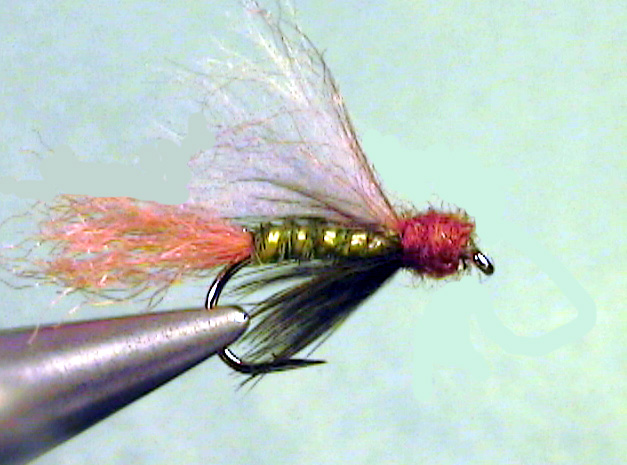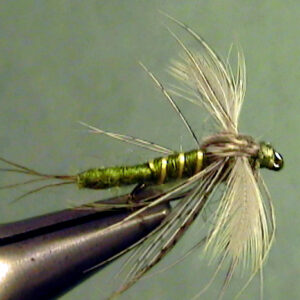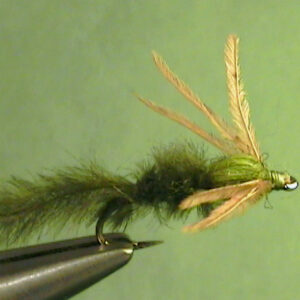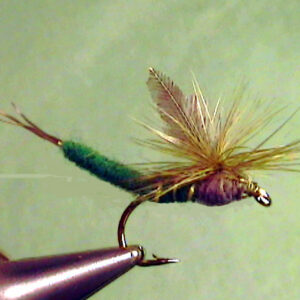Hook Size: 12/14
This is the trailing shuck emerger stage of the Western Green drake. It imitates the insect near the surface during the hatch and it drift in the surface skim with the nymphal shuck still attached to the emerging dun.
The Western Green Drake nymphs both swim to the surface to emerge from their
nymphal shuck, or they may emerge beneath the surface. In some cases they may swim
up to the surface to trying to emerge several times. Remember this will usually be in the
slower moving areas of water adjacent to fast or moderate flowing water. I have not
raised them in an aquarium, but I am told they split their nymphal shucks about midway
between the bottom and the surface. It’s thought that they have a high number of cripples
as compared to other mayflies but again, I am not certain of that.
The Green Drake Emerger is more like the dun than the nymph. It has an antron shuck
attached to the tail that imitates the nymphal shuck still attached to the tail of the dun.
At times the trout don’t want to feed on the surface and theemerger works better than the
dun. It is more difficult to see in the water.
As mentioned, the nymphs that live in fast water will migrate to the slower moving water
nearby. Those that live in the medium flowing areas of a stream hatch in the same water
they live in. The hatch only last a few days, usually from a week to two weeks on any one
stream at the most. Normally the Green Drakes hatch in the middle of the day, or the
warmest part of the day, and last for about two hours.
Presentation:
To imitate the nymph swimming to the surface, you can fish a slightly weighted imitation of
the nymph and fish it up and across on the swing. If you are fishing our Green Drake
trailing shuck emeger fly, and we certainly hope you do, then you should allow it to drift
drag free in the surface skim. An up and across on the swing type of presentation is best
for this. The up and across also works best for the plain emerger.
In pocket water streams, fish the slower water on the outside edges of fast water current
seams and the inside of pockets behind boulders. They may also emerge at the ends of
long runs.
In smooth flowing water, we recommend fishing to individual fish if you can find them
feeding in the surface skim. We stick with an upstream presentation most of the time
although a down and across presentation will also work depending on the conditions of
the area of water you are fishing. Getting the fly to drift drag free isn’t easy in some of
the smooth water streams. The current can be very deceptive. An uneven bottom and
grass beds can create some very complex currents. It is best to keep you cast short as
you can without spooking the trout.
Copyright 2013 James Marsh



